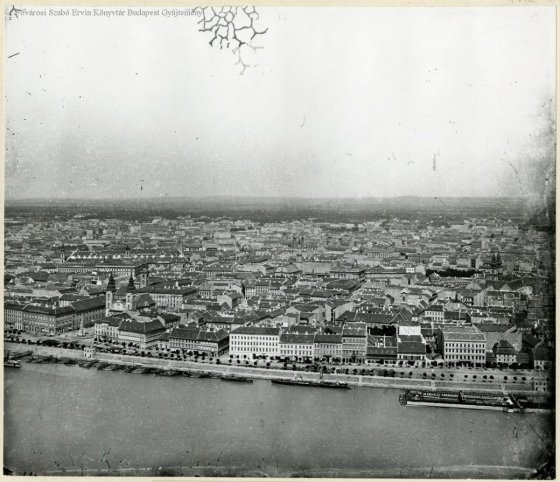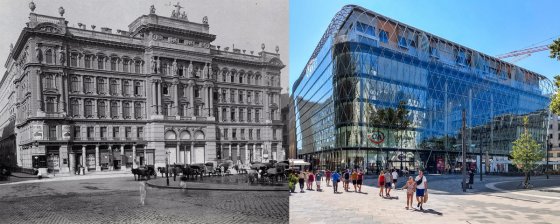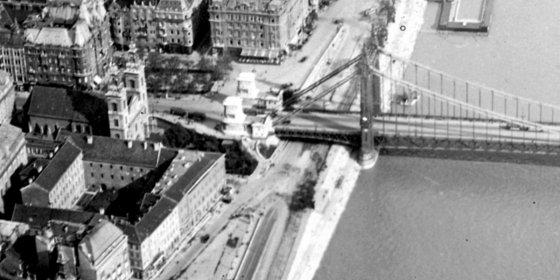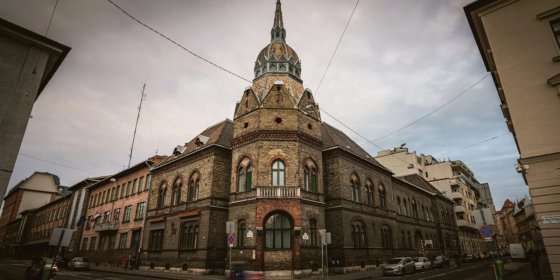 The „intertwined history” of the bridges and the city of Budapest
Which ideas and events have shaped the fate of bridges of Budapest and the cityscape? Alongside many other interesting facts, this question is also answered this newly published book by the Budapest City Archives, which introduces the history of bridges in Budapest.
The „intertwined history” of the bridges and the city of Budapest
Which ideas and events have shaped the fate of bridges of Budapest and the cityscape? Alongside many other interesting facts, this question is also answered this newly published book by the Budapest City Archives, which introduces the history of bridges in Budapest.
Eskü Square
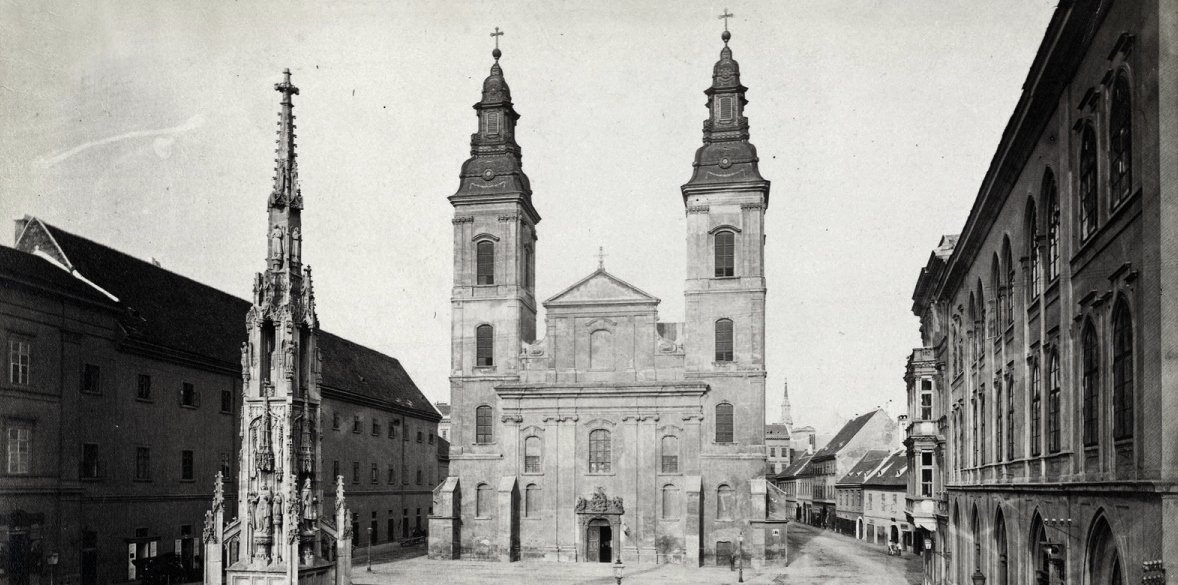 Tunnels instead of bridges? – An unrealised plan from the 19th century to connect Pest and Buda
Tunnels instead of bridges? – An unrealised plan from the 19th century to connect Pest and Buda
March 11, 2023 at 2:30 PM
The plan to build road tunnels under the Danube instead of bridges was seriously considered in Budapest already 130 years ago. Proponents argued that tunnels were cheaper, more sustainable and less militarily vulnerable. This idea was on the agenda for years, but the tunnels were not built in the end.
A plan made 150 years ago for the development of Pest - A special drawing of the Eskü Square Bridge
June 5, 2022 at 9:30 AM
150 years ago, there was no unified Budapest, but there was already a unified plan for the development of the future capital.
Pestbuda recalls how much Budapest has changed in 100 years with 6 interesting pairs of pictures
July 30, 2021 at 9:00 AM
It is always exciting to follow the change, especially when it comes to Budapest. Old photos faithfully document what a house, street or square in the capital used to be like. With their help we can recall the former Haas Palace in Gizella Square, marvel at how - in the 1880s and 1890s - barren the Rózsadomb was, and today's Margit Boulevard were more like the streets of a small town. Factories stood on the banks of the Danube in Pest, next to the Parliament building under construction.
When the ramp of the Elizabeth Bridge was widened, moving the church also came up, in the end the sidewalk was lowered
July 17, 2021 at 9:00 AM
In the 1930s, the car traffic in Budapest was already so high that the Pest bridgehead of the Elizabeth Bridge had to be rebuilt in order to avoid permanent traffic jams and the risk of accidents. Even the relocation and even demolition of the Inner City Parish Church was discussed, but instead the designers chose an imaginative and inexpensive technical solution. The new ramp of the bridge was completed on 17 July 1936.
Tens of thousands of fires – A short history of the 150-year-old Budapest Fire Brigade
November 24, 2020 at 12:00 PM
Founded in 1870 through the initiative of Ödön Szécsenyi professional firefighters have been battling flames in Budapest ever since. Over the last 150 years, they have proven themselves not only during fires and catastrophes but through the storms of History during the world wars and the siege of Budapest. Their work is now a fundamental requirement of the city functioning safely.
More articles
 The „intertwined history” of the bridges and the city of Budapest
Which ideas and events have shaped the fate of bridges of Budapest and the cityscape? Alongside many other interesting facts, this question is also answered this newly published book by the Budapest City Archives, which introduces the history of bridges in Budapest.
The „intertwined history” of the bridges and the city of Budapest
Which ideas and events have shaped the fate of bridges of Budapest and the cityscape? Alongside many other interesting facts, this question is also answered this newly published book by the Budapest City Archives, which introduces the history of bridges in Budapest.
 The Bridge Report, which brought a turning point in the history of Budapest
A travel report that changed the history of Pest and Buda, as well as Hungary. The little book contributed to the change of half a thousand years of legal customs and the implementation of an investment of unprecedented size and technical quality. This book was The Bridge Report [Hídjelentés in Hungarian].
The Bridge Report, which brought a turning point in the history of Budapest
A travel report that changed the history of Pest and Buda, as well as Hungary. The little book contributed to the change of half a thousand years of legal customs and the implementation of an investment of unprecedented size and technical quality. This book was The Bridge Report [Hídjelentés in Hungarian].
 Drama on the university wall - The heroic monument was planned 95 years ago
In the constant hustle and bustle of the Egyetem Square in Pest, the students may not even notice the monument that decorates the short section of wall between the church and the central building of ELTE. However, it commemorates their predecessors, the heroes who fought for their country in World War I, and those who heroically helped them. The first design of the dramatically collapsing soldier was born in 1928, ninety-five years ago.
Drama on the university wall - The heroic monument was planned 95 years ago
In the constant hustle and bustle of the Egyetem Square in Pest, the students may not even notice the monument that decorates the short section of wall between the church and the central building of ELTE. However, it commemorates their predecessors, the heroes who fought for their country in World War I, and those who heroically helped them. The first design of the dramatically collapsing soldier was born in 1928, ninety-five years ago.

